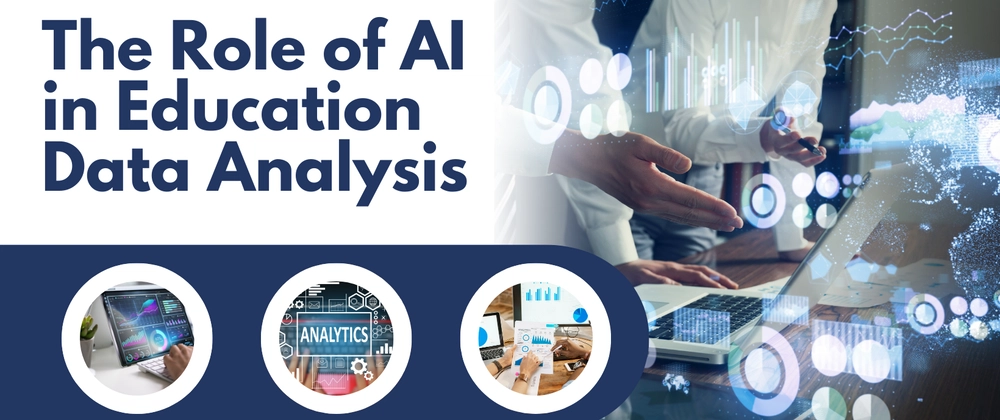Introduction
Education is evolving rapidly, and technology plays a huge role in this transformation. Artificial Intelligence (AI) is now a powerful tool for analyzing education data. Schools, colleges, and universities generate vast amounts of data every day. AI helps process this data to improve learning experiences, enhance decision-making, and boost student success.
What is Education Data Analysis?
Education data analysis involves collecting, processing, and interpreting student and institutional data. This data includes student performance, attendance records, learning patterns, and teacher evaluations. Proper analysis helps educators make informed decisions to improve teaching methods and student outcomes.
AI makes this process faster and more accurate. It can analyze large datasets in real time and detect trends that humans might miss. This leads to better insights and more effective education strategies.
How AI is Used in Education Data Analytics Services
AI is applied in various ways to improve education data analytics services. Here are some key areas where AI plays a significant role:
1. Personalized Learning
Every student learns at a different pace. AI helps create personalized learning experiences by analyzing student performance data. It suggests customized study materials and adjusts difficulty levels based on student progress. This ensures that students receive the support they need.
2. Predicting Student Performance
AI can predict student success and identify at-risk students. By analyzing attendance, grades, and engagement levels, AI helps educators intervene early. This prevents dropouts and ensures students stay on the right track.
3. Automating Administrative Tasks
Teachers and school administrators spend a lot of time on paperwork. AI automates tasks like grading assignments, scheduling classes, and managing student records. This allows teachers to focus more on teaching and mentoring students.
4. Enhancing Teacher Performance
AI helps evaluate teacher effectiveness by analyzing student feedback and classroom performance data. It provides insights on areas of improvement, helping teachers enhance their teaching strategies.
5. Smart Content Development
AI assists in developing digital learning materials such as smart textbooks, interactive modules, and virtual tutors. These resources adapt to student needs and improve engagement.
6. Chatbots for Student Support
AI-powered chatbots help answer student queries, provide assignment reminders, and guide students in choosing courses. This improves student support without burdening teachers and administrators.
Benefits of AI in Education Data Analytics Services
The use of AI in education data analytics services brings several advantages:
- Improved Decision-Making: AI provides data-driven insights that help educators make better decisions.
- Time Efficiency: AI automates tasks, saving time for teachers and administrators.
- Enhanced Learning Experience: Personalized learning paths ensure students receive the right support.
- Early Intervention: AI identifies struggling students early, allowing timely support.
- Better Resource Allocation: Schools can optimize resources based on data analysis.
Challenges of AI in Education Data Analytics Services
While AI offers many benefits, there are challenges that need to be addressed:
1. Data Privacy and Security
Student data is sensitive and must be protected. Schools need strong security measures to ensure data privacy.
2. Bias in AI Algorithms
AI systems can sometimes be biased due to the data they are trained on. It is crucial to use diverse and unbiased datasets to ensure fair analysis.
3. High Implementation Costs
Integrating AI into education systems requires significant investment in technology and training. Not all institutions can afford this.
4. Resistance to Change
Some educators may be hesitant to adopt AI tools due to a lack of understanding or fear of job displacement. Proper training is necessary to address these concerns.
The Future of AI in Education Data Analytics Services
AI will continue to evolve and become an integral part of education. Here are some future trends:
- Advanced Predictive Analytics: AI will become better at forecasting student success and learning needs.
- AI-Powered Virtual Classrooms: More institutions will adopt AI-driven virtual learning environments.
- Real-Time Feedback Systems: AI will provide instant feedback to students and teachers, improving learning outcomes.
- Greater Collaboration Between AI and Educators: AI will support, not replace, teachers, making education more effective.
Conclusion
AI is revolutionizing education data analytics services by making learning more personalized, efficient, and data-driven. While challenges exist, the benefits far outweigh the drawbacks. With continued advancements, AI will play a crucial role in shaping the future of education, ensuring better outcomes for students and educators alike.



Top comments (0)